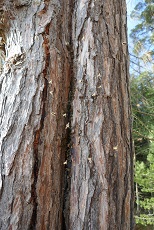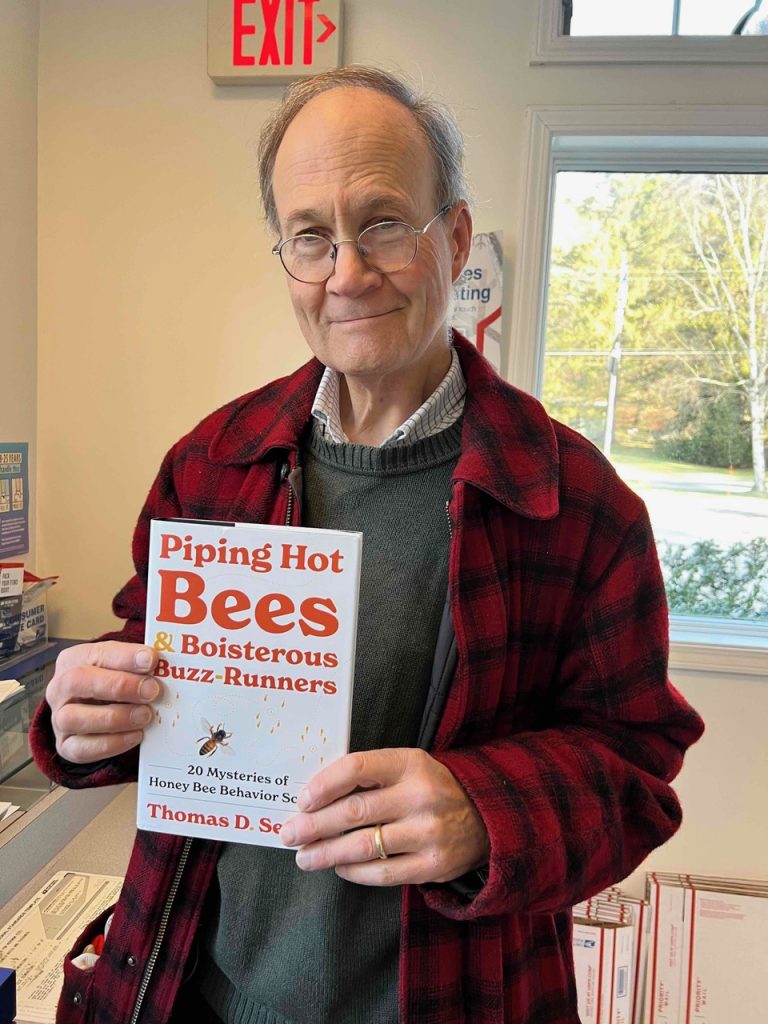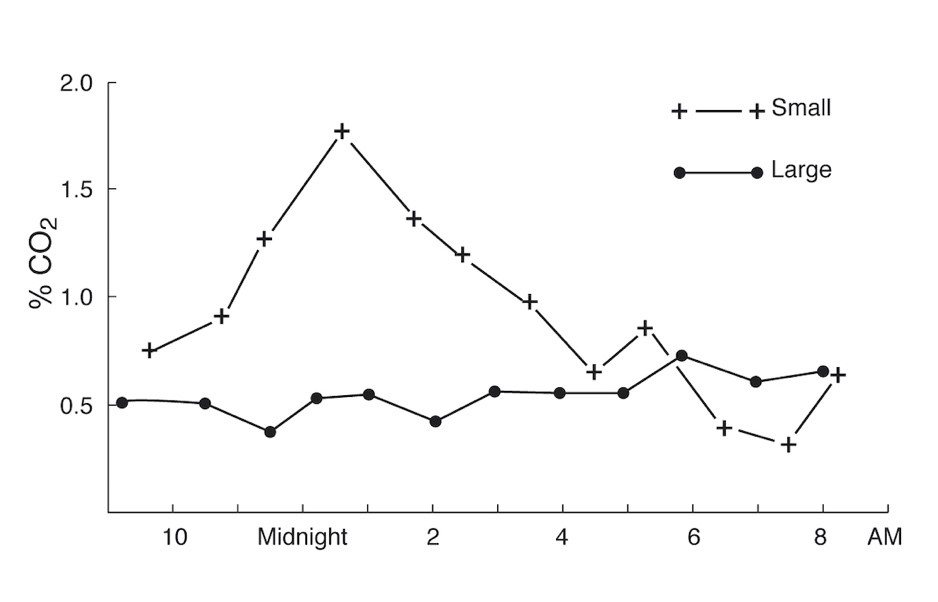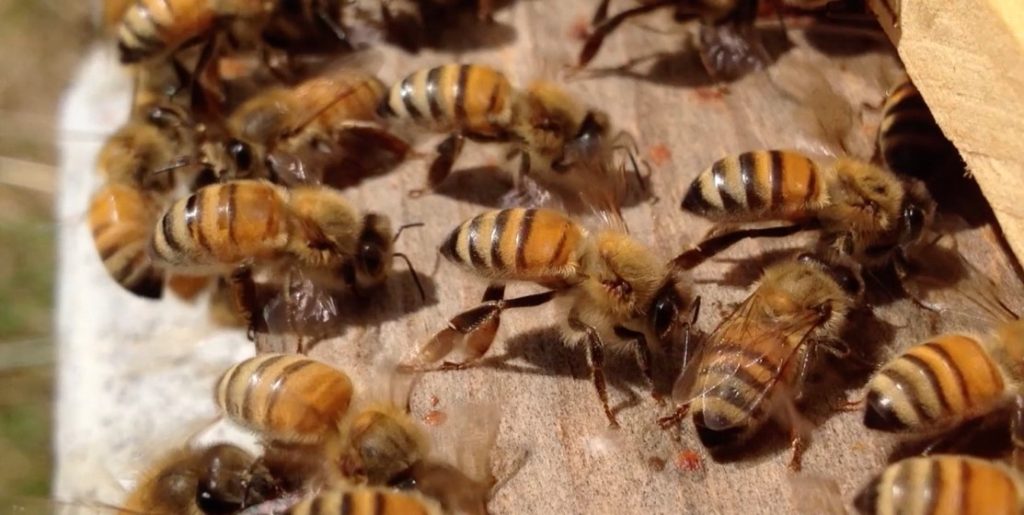
Introduction.
This week, another friend helps me out during a busy month as I scramble to get the last module of an online beekeeping course completed so I can keep myself up to date in the beekeeping world.

I’m really grateful to everyone who writes a guest blog for us, and today I thank Professor Tom Seeley for his generous contributions. Tom delights us with his wonderful bee stories based upon a lifetime of science, research, and being around honey bees for the pure pleasure of it. Today we learn how Tom discovered what a colony does to prevent asphyxia, and we get a sneaky wee peek into a chapter of Tom’s latest book coming soon to a bookshop near you (April). By the way, you can order Piping Hot Bees from Northern Bee Books https://www.northernbeebooks.co.uk/ .Did you know that they are the biggest beekeeping bookstore in the world and they send books all over it from Kintyre to Kathmandu?
Asphyxia.
Have you ever wondered why a colony of honey bees does not suffer asphyxia? After all, colonies live in snug hives that often have a small entrance opening. We now know that asphyxia is a threat to colonies, but that they have ways to avoid it. I was drawn to this puzzle when I was 10-year-old boy and observed a colony living in a tree cavity. I wondered how the knothole for this colony’s nest entrance (Fig. 1) could be a big enough “breathing hole” for the thousands of bees living inside this tree. Why don’t they suffocate? A few days later, I saw something that gave me a clue: a dozen worker bees stood side-by-side along the bottom of the knothole, with their heads pointing into it, their bodies hunched over, and their wings whirring so fast that they were nearly invisible. The bees’ light-brown bodies stood out against the tree’s dark-brown bark, and each bee’s wings hummed steadily, as if they were battery powered. I had no doubt that they were expelling air from their home, but I could only guess about why they were doing this. To cool it? To ventilate it? Perhaps both?

Inspiration.
What led me to study nest ventilation was something I saw when I was 22 years old and had become a beekeeper: worker bees were fanning steadily at the entrances of my hives on a chilly evening of a rainy day. This puzzled me. I figured that, given the conditions, these colonies didn’t need fanners to cool their homes or to “ripen” fresh nectar into honey. (No colony has fresh nectar at the end of a rainy day.) I suspected that the bees might be ventilating their homes to avoid asphyxia. If so, then worker bees must be sensitive to either a lack of oxygen or an excess of carbon dioxide inside their colony’s nest. I wanted to learn more.
Investigation.
In the early 1970s, it was impossible to make a thorough search of the scientific literature—Google Scholar was 30 years in the future—but a kind librarian at Dartmouth College helped me find two articles that contained information on the responsiveness of honey bees to carbon dioxide. The first was published in 1941 by a Dutchman, Dr. Engel H. Hazelhoff. His report appeared in a Dutch beekeeping magazine, the Maandschrift voor Bijenteelt [Journal for Beekeeping]. I could neither locate this magazine nor read Dutch, so, all I knew about Hazelhoff’s study was what Ronald Ribbands, had written about it in his 1953 book The Behaviour and Social Life of Honeybees: “Hazelhoff (1941) found that fanning commenced within one minute of the introduction of a stream of carbon dioxide in the hive.”
The second article that I found on carbon dioxide and honey bees was published in 1964 by a German neurobiologist, Dr. Veit Lacher. This article was published in a rigorous scientific journal, the Journal of Comparative Physiology. Lacher had studied the olfactory cells on the antennae of worker bees, and had discovered that some of these cells are sensitive specifically to carbon dioxide (CO2). The response threshold for these CO2-sensitive antennal cells is about 0.50%. This seemed to me to be just right for monitoring the CO2 level inside the crowded nest of a honey bee colony.
Setting up the Experiment.
Now I knew what I needed to do: (1) measure the CO2 levels in bee hives, to see what threats honey bees face from asphyxia by excessive CO2; and (2) describe the bees’ responses to high levels of CO2 inside their home. Would I see rises (and falls) in the CO2 level in a hive, and would I see corresponding rises (and falls) in the number of bees fanning their wings for nest ventilation?
After building a sensitive CO2 analyzer, I was able to measure, with 1-microliter precision, how much CO2 was in an air sample. I took 25-milliliter air samples from the hives of two colonies, one small and one large. Samples of this size meant that my measurements of the CO2 levels had a precision of 0.004%.
Next, I began measuring the gaseous CO2 levels inside the hives of two colonies, one small and one large. I knew that honey bees live crowded together inside their homes, so I expected to find inside them levels of CO2 that were higher than the 0.03-0.04% level of CO2 in fresh air. I was astonished, however, when I made my first measurements and learned how incredibly “stuffy” it can get inside a bee hive.
I extracted, and then immediately analyzed, an air sample from both hives once an hour, from 9 PM to 9 AM the next day. I worked at night because I wanted to see how stuffy it gets inside a hive when the entire colony is at home. The results, shown in Fig. 2, surprised me in two ways. First, I found that the average CO2 levels inside the hives of the large and small colonies were 0.55% and 0.92%, respectively. This was some 20 and 30 times higher than in fresh air!!! Clearly, the homes of honey bees are extremely stuffy, at least by human standards. (If we breath air with a CO2 level of 0.50% , then we feel will feel drowsy.) Second, I found that the CO2 level varied far less in the large colony’s hive (range: 0.39% – 0.72%) relative to the small colony’s hive (range 0.33% – 1.77%).

Fig. 2. Readings of the levels of gaseous carbon dioxide in the hives of a small colony and a large colony throughout a cool night, thus when everybody was at home.
Fanning.
After I took each air sample, I looked for fanners at each hive’s entrance. These inspections explained the differences in CO2 level between the two colonies. At the large colony, I always saw bees fanning and heard the “roar” of more fanners working inside the hive. Recent studies of nest ventilation by honey bee colonies, by Jacob Peters and his colleagues at Harvard University, have shown that when workers ventilate their home (Fig. 3), they use a wing-fanning behavior that differs from the wing-flapping motions that they use for flight. The frequency and amplitude of the bees’ wing movements are markedly different when they are fanning (174 Hz and 118°) vs. when they are flying (227 Hz and 87°). These investigators also found that the air that shoots from a hive’s entrance can have a velocity above 3 meters per second (10 feet per second), which is 11 km/h (6.8 mph). Powerful ventilation!

Fig. 3. Bees fanning their wings to ventilate their home on a hot day.
At the smaller colony, however, I never saw or heard fanners. I suspect that this colony was struggling to keep its brood warm, so was unable to keep its nest well ventilated. This was certainly the situation between midnight and 2 AM, for then its CO2 level rose above 1.5%, which is high enough to make a human breath fast and hard. I looked the next morning for dead bees in front of this hive, but I found only four… no more than usual. Evidently, honey bees can tolerate levels of CO2 that are harmful for human beings.
I did another experiment with a small colony living in an observation hive. It contained one frame that held brood, pollen, and honey, and that was covered with some 2,000 worker bees and a queen. It had two tubes, one for introducing a gas (carbon dioxide or nitrogen), and the other for taking air samples. I waited until it was night (when all the bees were at home), then I began making counts of bees fanning inside this hive.
The results for the CO2 trials confirmed Hazelhoff’s report. Introducing a gentle stream of CO2 stimulated strong fanning. But introducing a stream of nitrogen, even a strong one, did not stimulate fanning. This showed me that the bees’ fanning response in the CO2 trials was triggered by the CO2 per se, not simply by the disturbance of introducing a gas.
I like very much the phrase “a canary in the coal mine,” which refers to an early indicator of some danger. Coal miners took caged canaries into mines as sentinels to tell them when the level of carbon monoxide or carbon dioxide had grown dangerously high (from the steady oxidation of coal seams exposed to air). If the canaries stopped singing, then the miners knew that they needed to get out! In this chapter, we have seen that honey bees, like coal miners, face a danger of asphyxiation from carbon dioxide, and that they, too, have sentinels—the CO2-sensitive olfactory cells on their antennae—to tell them when to take action to deal with this danger.

Fascinating article from Professor Seeley, as always. Presumably, open mesh varroa floors allow heavy CO2 to flow out of hives and reduce this issue for our bees – maybe a slight benefit in our battle with the mites!
For sure, a screened bottom board will foster air exchange between inside and outside a hive. This is good in the summer, but maybe not in the winter (too drafty?). When a gas is pure CO2, it is much heavier than normal air, so pure gaseous CO2 does move downward. But when air contains only a percent or so of CO2, like in a beehive, I’m not sure that the weight of this “stuffy” air is enough to cause it to flow out the bottom of a hive equipped with a screened bottom board. Something to investigate!
Thank you so much for another fascinating blog.
You are welcome, Liz. I appreciate knowing that you found my blog fascinating.
Thank you, Jason, for telling me that your colonies in Alaska can survive snow burials lasting weeks and months. I’d love to know what levels of CO2 develop inside hives when buried by snow for weeks and weeks. Sounds like the bees are incredibly resilient to gaseous CO2 , while at the same time they are keen to rid their homes of it through nest ventilation, when possible.
Thanks for this article, really enjoyed it. Here in Alaska, I used to feel it was very important to keep the lower entrance clear of snow during our 5 month winter (I don’t use top entrances), but over time I’ve come to believe it doesn’t matter — the bees seem to be able to survive weeks and months buried in snow just fine (partly, but not only, because the heat of the hive over time melts a channel through the snow). Recently I saw in this article that there were beehives that were buried under volcanic ash for 2 months that also seemed to be fine — more evidence that bees can handle much higher levels of CO2 than most of us imagine: https://www.dailymail.co.uk/news/article-10192693/Beekeepers-discover-thousands-bees-SURVIVED-buried-volcanic-ash-FIFTY-days-La-Palma.html
Thank you, as always another incredibly facinating fact of bee hive operation.
Thank you for another fascinating aspect of the life and times in a beehive
You are welcome, Bob. I like to share with beekeepers what I have learned about the habits of honey bees. No sense leaving these findings hidden in the scientific journals!
I’ve just (half an hour ago) put a Senseair Sunrise CO2 and a Sciosense CCS811 MOX sensor under the roof of one of my colonies. They transmit the CO2 concentration and volatile organics concentrations to my receiver indoors every 10 minutes. I should get about 48 hours data before the battery runs out. I was surprised at the high CO2 level which prompted me to search for more information which led me to your blog – thank you for the interesting article.
The CO2 level mid morning is around 5000ppm and volatile organic oxides 1000ppb.
Thank you, Margaret, for sharing the reading of the CO2 concentration that your sensor provided.
If my math is correct, 5000 ppm = 5 parts per thousand = 0.5 parts per 100 = 0.5%. Air with 0.5% CO2 is mighty stuffy (10+ times what is in fresh air, and above the legal limit for human work places), but honey bees can deal with this, by ventilating their homes.